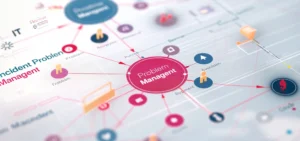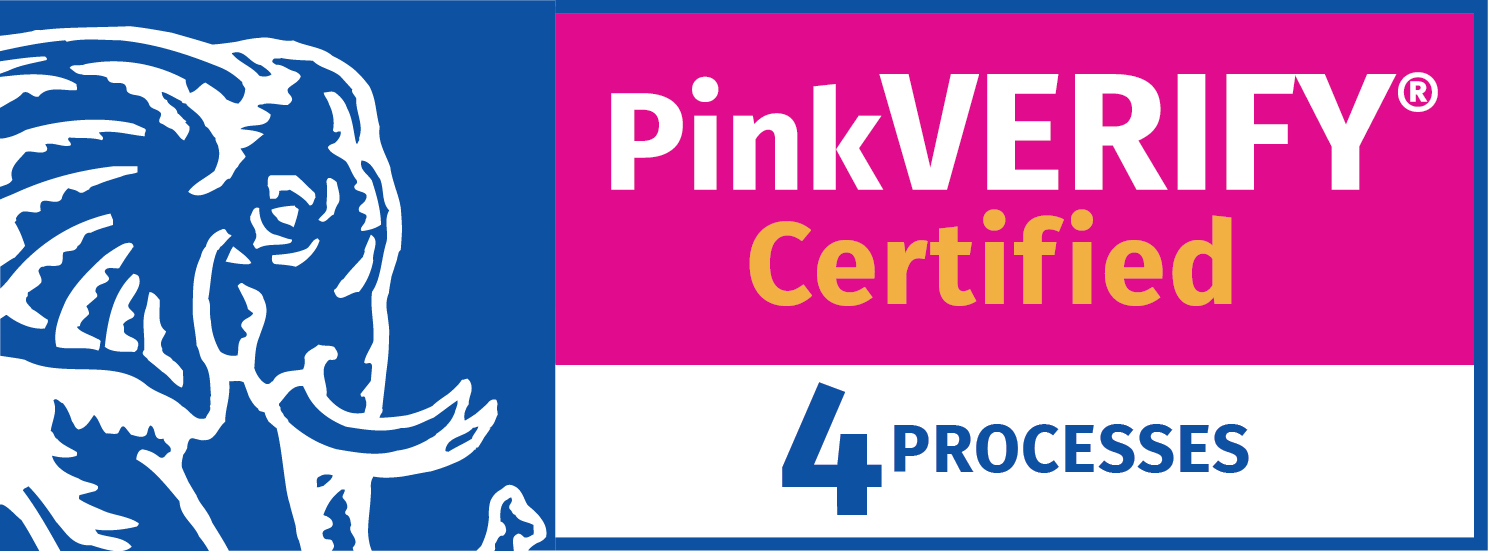To understand the importance of IT Asset Management, it helps to look at some numbers.
Today’s employees each have an average of 2.5 IT devices.
For a midsize company with 1000 employees, it adds up to 2,500 IT assets – and that’s just the beginning.
Now include all the servers, routers, printers, monitors, peripherals, and software.
Speaking of software, enterprise devices have an average of 67 installed applications. For the same midsize business, that adds up to over 150,000 app installs, company-wide.
Now, let’s examine the ratio of IT staff to employees, which is a median of 1:23 for organizations with 1,000 to 5,000 employees.
This means that each IT technician is responsible for hundreds of hardware devices and software applications.
How is it possible to keep track of all these IT assets, let alone manage them properly, and ensure there are no duplicated licenses, wasted resources, or overpriced contracts? With a modern, effective IT asset management strategy and tools.
What is IT Asset Management?
IT Asset Management, or ITAM, is the process of tracking, managing, and optimizing the IT assets in an organization. This includes hardware (laptops, monitors, routers, printers, mobile devices, etc), software (applications, licenses, subscriptions, etc), and cloud assets (cloud services, SaaS subscriptions).
IT asset management is a key function of an overall IT management strategy. IT professionals rely on dedicated ITAM software and tools, such as IT Care Center Asset Management, to help them do it right.
How IT Asset Management Enhances Business Operations
Depending on the size and complexity of the organization, IT asset management can be more or less complicated, but it is always challenging. It typically involves tracking inventory, calculating the lifecycle costs of IT assets, monitoring and optimizing usage of licenses, warranties, and contracts, negotiating with vendors, and planning future budgets for IT procurement.
Let’s take a look at some of the ways that IT asset management benefits businesses:
Cost savings
Did you know that 50% of software licenses are unused? This leads to over $500 million worth of wasted software costs for businesses every year.
IT asset management gives IT teams visibility and control over software, and licensing, helping to prevent financial waste by getting the most from existing resources. For example, ITAM can identify underused software, enabling IT managers to reallocate the license usage or negotiate the agreement to get more suitable terms.
IT asset management also tracks the lifecycle of hardware, so that IT teams can identify aging equipment and replace it before it becomes outdated and begins straining the IT budget.
Compliance
Software licenses and contracts are complicated and hard to keep track of. IT asset management consolidates and monitors licensing agreements, helping IT teams to ensure compliance and avoiding the issues and penalties that arise from unauthorized software use.
With thousands of assets across the organization, each with their own licenses and specific regulatory requirements, effective software license management is made much easier with an automated ITAM tool.
Cybersecurity
Outdated or obsolete software poses some of the biggest risks to cybersecurity. Old software that lingers on IT devices is unpatched with security gaps that are easy for hackers to exploit.
Properly managing IT assets ensures that unused software is regularly identified and deleted, helping to boost the organization’s cybersecurity posture and prevent the potential damage of data breaches.
Efficiency & performance
When systems are running smoothly, so is your business. IT asset management tracks the performance and reliability of IT assets, helping to identify poor-performing assets and take steps to improve or replace them.
ITAM also provides visibility of which employees have access to different IT assets. IT teams can use this data to ensure that employees or teams have the hardware and software they need to do their jobs, reducing downtime or wasted time, and boosting productivity.
Future-Proofing Your Business with IT Asset Management
An organization is always evolving, from inside and out. Internal challenges include employee turnover, budget restraints, and technology gaps, all of which make it harder to keep up with the competition.
External conditions of the broader industry and economy play a part too. Gartner has identified several macro issues that will affect businesses in the coming decade, including the threat of recession, a shortage of skilled manpower, and reduced productivity in the workplace.
IT asset management is a critical card that IT managers can play to future-proof the business against internal and external pressures and emerge as a leader in the organization. Let’s explore three key ways that ITAM helps to transform businesses:
Data-driven asset management
Digitization of asset management turns a complicated inventory problem into a data-focused problem. This makes it possible to quantify the activities and life cycles of IT assets and generate actionable insights to improve performance and reduce costs.
There are many data-based metrics that IT teams can analyze to understand the status of IT assets including (among others):
- Hardware asset utilization
- Average costs of assets
- Software license compliance
- Software distribution/usage
- Asset lifecycle status
- Maintenance and repair history
- Procurement trends
Case in point: Reducing the carbon footprint of IT assets
With ITAM, businesses can track the energy consumption of IT assets by monitoring power usage and reducing wastage. For example, ITAM software can identify servers running 24/7 that are underutilized, so the IT team can consolidate workloads onto fewer devices or shut down unnecessary ones and implement energy-saving settings like automatic power-off during non-business hours. This not only reduces energy costs but also helps create a greener IT environment. Energy reduction is particularly relevant to large organizations with extensive IT infrastructure and sustainability targets to meet.
Optimization of IT investments
IT is a costly part of running a business. Software companies spend around 19% of their revenue on IT, while for MSPs, the figure is 16%. Businesses in the consumer products and services industry spend around 5% of revenue on IT – less, but still a significant amount.
IT asset management is key for optimizing IT investments and getting more from your budget.
Here are several examples of how it does so:
- Tracks software licenses, preventing overspending on unused or outdated software and avoiding costly licensing violations.
- Tracks hardware in real-time and safeguards against theft and loss.
- Manages depreciable assets throughout their lifecycle, helping to maximize value at every stage.
- Provides visibility into asset utilization, enabling smarter, more strategic decisions about IT procurement.
- Enables proactive maintenance of IT assets, increasing their health and longevity.
- Positions stakeholders with accurate insights about IT needs so they can negotiate for better hardware, software, and service contracts.
Case in point: Identifying unreliable hardware
Hardware devices that perform slowly, poorly, or have frequent issues are a financial drain. They demand extra attention from IT teams, which uses up time and resources, as well as increasing downtime and reducing the productivity of the user. With ITAM, IT teams can run reports that examine the brands, models, and types of hardware in the organization to identify problematic assets and replace or retire them. It also helps future procurement decisions, guiding the IT team about which assets are not reliable, and should not be purchased again.
ITAM and AI
AI functions in IT asset management are mainly focused on automation, enabling IT teams to automate routine tasks and free up time for more strategic ITAM activities. Predictive AI is also used in ITAM tools to optimize asset usage, identify security risks, and detect configuration anomalies that may cause issues.
The role of AI in asset management is in its early stages and has yet to be fully realized. The forecast is positive, however, with 72% of surveyed professionals believing that AI will improve the quality of existing IT asset management tools in the future. 62% say that AI will help improve smart decision-making while 62% think that AI will boost the operational efficiency of ITAM.
Case in point: Automating network scans
Regularly scanning networks and systems is a routine yet critical task in IT asset management, enabling the team to maintain an up-to-date log of all assets and configurations. With an AI-based ITAM tool, automated scans can capture the entire IT environment, and track changes and trends across vast data sets that may be hidden to human intelligence. Armed with the forecasts of AI analytics, IT teams can make smarter decisions about critical IT assets, needs, and risks.
IT Asset Management with ITCC:
IT Care Center offers an IT Asset Management module as part of its comprehensive ITSM platform. In one single license, you can expand your ITSM strategy to include ITAM and many other service management functions beyond the helpdesk.
ITCC Asset Management includes:
- 360-degree inventory management: ITCC is highly customizable so IT managers can configure any asset type and add multiple different assets, building an IT asset management solution that works for their environment. Manage all IT assets in one place, with full visibility via one centralized dashboard.
- Software licensing and contract management: Manage software vendors, licenses, and contracts across the organization via a single list that consolidates all the critical information. Prevent overpaying, optimize costs, and avoid compliance issues with granular access to software and licensing data at the version level.
- Integrations with ITSM: Integrate with ITCC’s Change Management and Problem Management modules to expand your ITAM strategy. Streamline software configuration changes and updates, and manage incident reports related to specific assets within your ITCC asset management platform.
- Software compliance, digital signatures, and much more.
Leverage ITCC expertise for IT Asset Management and maximize the efficiency of your organization’s IT inventory and investment.





